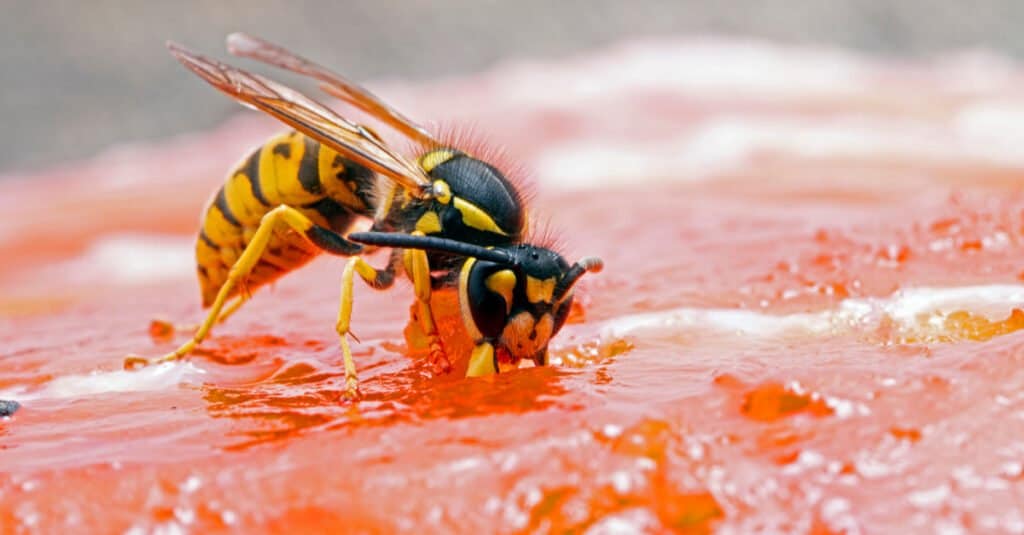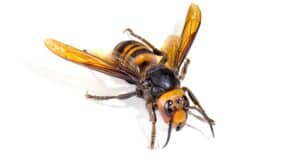Yellowjackets have evolved to fight off all sorts of threats to their nest. But they have not yet adapted to cope with vacuum cleaners! In this clip, we see an expert yellowjacket remover dealing with a subterranean nest. The yellowjackets have set up a home in someone’s garden but they are causing a nuisance and posing a threat to the homeowner’s dogs and the humans at the property. They have to be removed. However, this is not easy when they are hiding underground.
So, the expert has to put on protective clothing and then encourage as many yellow jackets as possible to flee from the nest by banging on the ground. The insects see the vacuum hose as a threat and start to fly towards it. This is the biggest mistake! As soon as they are airborne, they get sucked up by the vacuum. Scroll down to see the extraordinary sight!
Where Do Yellowjackets Normally Live?

Yellowjackets can be a nuisance around picnics.
©Ernie Cooper/Shutterstock.com
This particular footage was captured in Pennsylvania, US but yellow jackets are found all over North America. The term ‘yellowjacket’ is a name commonly used in the US for some particular species of wasps. In this clip, we see the southern yellow jacket which has the scientific name Vespula squamosa. They are found in the eastern United States and parts of Mexico and Central America. This particular species can often be found below ground, however, they may also construct their nests in tree holes and even in wall voids. They feed on other insects and the flesh of dead animals. However, they also feed on plant nectar and can be seen foraging around garbage cans and human picnics!
Are Yellowjacket Stings Dangerous?
We learn from this clip that the Southern yellow jackets are an aggressive type of insect which means that they are more likely to sting you. Furthermore, they can sting multiple times. If you get stung by a yellowjacket, it will pierce your skin with its stinger and inject venom into your body. This causes sudden pain and there can be inflammation and redness around the sting site that can last for several hours. It is not unusual for you to experience fatigue and itching.
Some people are allergic to the venom in yellowjacket stings. They can suffer from coughing, problems with breathing, lightheaded, vomiting, and diarrhea. This is potentially a life-threatening situation and medical attention should be sought immediately.
Watch the Incredible Clip Below
The photo featured at the top of this post is © Jim Lambert/Shutterstock.com
Thank you for reading! Have some feedback for us? Contact the AZ Animals editorial team.







